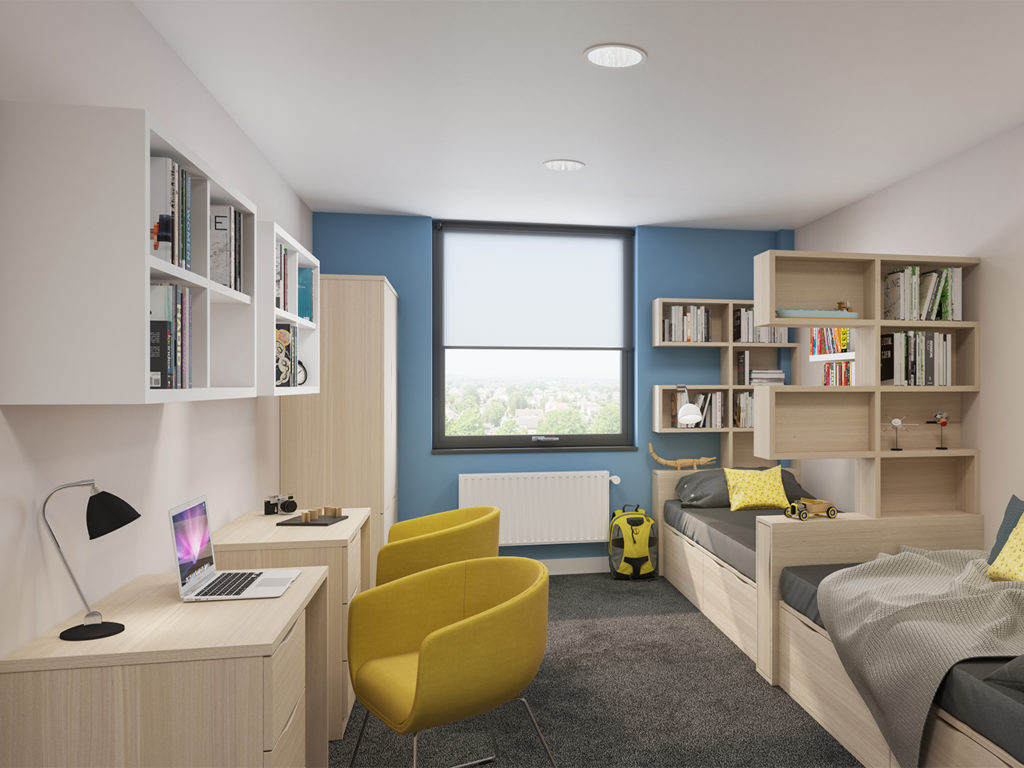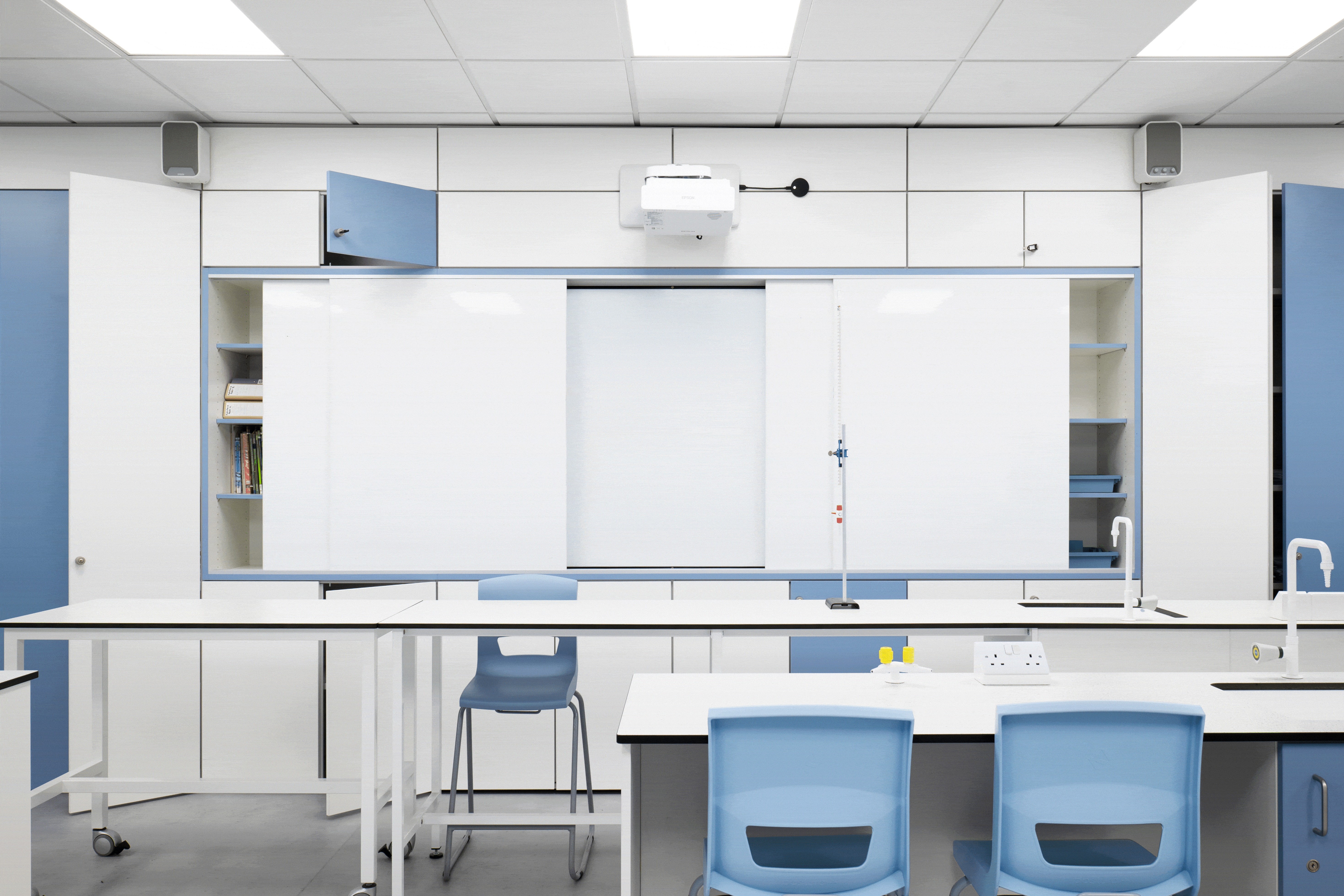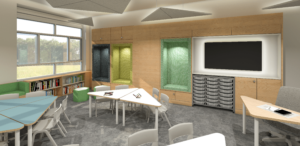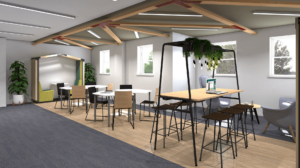Our new short series of articles explores the different boarding requirements for separate age groups. We begin by exploring what it takes to create a successful junior boarding house.
The junior boarding house is crucial to the success of a school’s boarding community. Get it right, and the chances are your junior boarders will stay with you for the duration of their school life. Get it wrong, and they’ll start looking for an environment better suited to their needs.
But how do you succeed in the perfect boarding house design? It’s not quite as easy as filling the room with pool tables and drinks machines, especially for younger members of your school. There needs to be a wow factor. And the space must create impact. But there are a few more subtle inclusions that need to be considered when creating an area that truly works for the junior members of the school.
So if you’re building a new junior boarding house, or looking to refresh your existing boarding facilities, our guide will help you get it right, allowing you to retain those all-important junior pupils.
Familiarity before you step through the door. For those beginning their boarding experience, the first days (and even hours) can be a challenge. It’s crucial to make their initial impression of their term-time home a good one, and this is best achieved by creating a space with which they can empathise and feel familiar. This is possible by having a strong theme running throughout the whole school and beyond. Brand colours from the website should be carried through to the interior design, images from the prospectus should be mirrored in the artwork on the walls, and the form and feel of newly purchased school equipment and freshly fitted uniform should all seamlessly flow through into the boarding house design to help create a sensation of comfort and familiarity. The children will already have created an attachment to this initial introduction to their new school so it is important to extend this impression into their new boarding house.
Remove the element of surprise. In situations where emotions are likely to be running high, it can be useful to remove the element of surprise. New boarders should not step through the door into a completely unfamiliar space. Part of their preparation should involve familiarising themselves with the layout and appearance of their new surroundings. The school website should be filled with pictures of the boarding house, not just as a useful marketing exercise for prospective parents but as a way for new arrivals to form early attachments with their new school. Going one better, a virtual tour acts as a fantastic way of removing the element of surprise from the first day at a new boarding house.
Friendly faces. Familiar possessions.One of the biggest challenges facing some boarders will be feelings of home-sickness. Gone are the days of a stiff upper lip and simply burying these feelings until they’ve reached an acceptable level. Instead, children should be encouraged to explore their emotions and develop strategies to cope with these perfectly normal feelings. Boarding houses should have individual spaces for each child to display and keep safe important personal possessions. Whether it’s a discreetly but safely stored away sentimental soft toy, or a collection of photographs of family members, each pupil should have somewhere they can quietly reflect and remember people and places of importance. It might be as simple as installing individual pinboards, providing space for photo walls and galleries, creating a poster display wall, or you might choose to get creative with a unique form of personalisation. Our design team are waiting to help you create sensational bespoke features for your junior boarding house.
Allow your boarding house to nurture.As well as providing comfort, boarding houses work best when they are allowed to nurture and develop skills and talents. Providing creative spacesnot only allows for emotional wellbeing and happiness, but it provides an inspirational place for children to develop their skills. Be sure to designate spaces for music rehearsal, creative areas where the children can get messy, and zones to explore different artistic techniques and practices. Zoning in boarding houses works well, and different sections can help to encourage participation in perhaps otherwise unexplored areas. For example, some junior boarders might be reluctant to admit that they want toget creative with lego and similar building games, but providing designated areas for everyone to enjoy tactile incitement, and reframing it as a viable option, should see a healthy uptake. We must always keep at the forefront of our minds that these are children, and we want to create an atmosphere where it’s ok to play games, do puzzles, and enjoy having fun.Make it easy to be organised.A large challenge for children entering a boarding community for the first time is the required level of organisation that this newfound independence brings. In order to allow them every opportunity to be successful in organising their possessions, belongings, and school equipment, there needs to be not just adequate storage, but intuitive storage. The children should be able to pick things out at a glance, and quickly tidy and reorganise yesterday’s kit and equipment. If tidying away is not instinctive and presents an onerous task, everything will be unceremoniously dumped into a single drawer or cupboard. Fortunately, we specialise in designing and building bespoke storage solutions that will give your boarders the best possible chance of remaining organised for the challenges of everyday school life.
Seamlessly allow for the integration of technology, but don’t allow it to take over.
There’s no denying that a boarders suitcase is expected to resemble a closing down sale at a local electrical store. The tech’ they bring is likely to be their most prized possession (despite what we wrote earlier about photos and sentimental soft toys). Laptops, phones, tablets, wireless headphones: all will need charging on a regular rotation basis. The options for this integration are plentiful and often depend on school preference. Some boarding houses opt for designated charging stations, allowing devices to be locked away and charged overnight. Others choose to install personal charging stations around the boarding house, whilst some decide to integrate USB hubs and power points into the bedroom furniture itself. However you elect to distribute power to these electrical devices, it’s important to ensure that their presence doesn’t take over the boarding environment. Restricting screen time is important, as is providing designated no-screen zones.Make the space safe –both emotionally and literally.Keeping boarders safe is always a key priority. And it should be done so in a non-threatening manner. They should never feel locked in, which is tricky because that’s exactly what you need to do. Locks and security measures should remain largely invisible to create the illusion of openness, whilst at the same time providing the necessary protection. To see how we’ve transformed existing boarding spaces into durable and inspiring spaces, check out the boarding house gallery on our website.Allow places for studying, homework, and independent learning.You might find that independent learning is a unique concept for those fresh to boarding school. In order to maximise the time spent on homework and independent study, it is crucial to have designated areas detached from distraction. Whether you choose to install workspaces within the common room, getting creative with partitioning and movable walls; or you opt for a standalone area with places to focus and engage withelements of homework, the need for study spaces is undeniable. Make sure these spaces have desks with room to spread out books, notepads, and writing materials, possess charging points for laptops and the necessary electrical equipment, and are situated in areas where concentration can be uninterrupted. The chances are your school has high educational expectations, so providing the correct environment to flourish academically is vital.Above all, don’t forget they’re children.Howevermuch bluster your new boarders bring with them when they first step through the front door, it’s important to remember that these junior boarders are still just children. Whilst we’re keen to instil independent thinking and constantly encouraging them to develop as individuals, it’s important that their boarding experience allows them to be children. Your boarding house should maintain a childish innocence, promote fun and laughter, and allow these young individuals to get the most from their precious childhood years



